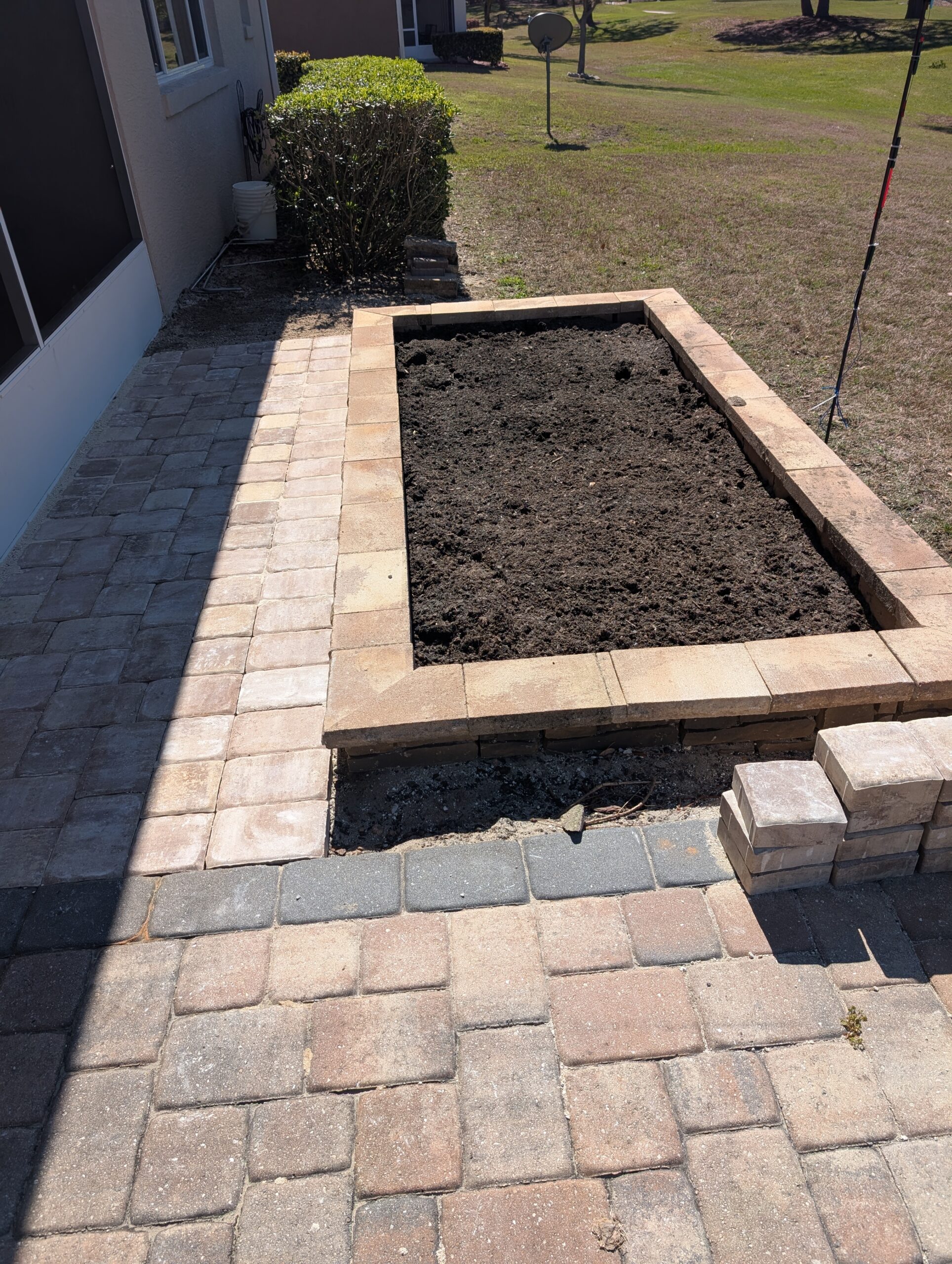Do you want to plant a home flower or vegetable garden this year? On Top of the World permits a garden with dimensions that shall not exceed an area of 40 square feet and shall be installed adjacent to back of the home/lanai. Garden shall not be installed further than 10-feet from the home and shall be parallel to the building or rear lanai. As a friendly reminder, please be sure to refer to Rules and Regulations for your association for exterior modifications and guidelines for herb and vegetable gardens. If you want to start growing, now’s the time.

Raised bed gardens offer numerous advantages, such as improved drainage, better soil control, reduced weeds, and a location close to your house for convenience.
There are several material options available. I chose pavers and stone to compliment my patio. An optimal height for vegetables is six to 12 inches.
The bed soil mix should be light, well-drained, and rich in organic matter. It usually consists of topsoil and compost for nutrients and moisture retention. Add peat moss or cocoa coir for aeration and moisture. Cocoa coir is neutral and allows you to adjust your pH and nutrient level. When blending your soils, you’re striving for a pH normally in the range of six to seven.
When filling the bed, I use a method referred to as lasagna gardening. I start with cardboard that is free of tape, staples, or printing laid directly on the surface, then layer leaves, peat moss, garden soil, and compost. They should be applied in several layers. The components will affect the pH, sustain worms, and provide nutrients essential to every garden. Compost improves soil fertility and structure.
Locate the gardens relative to the types of plants regarding exposure to the sun. When watering your raised bed garden, it’s best to use a moisture meter to avoid overwatering or preventing the soil from drying out. Popular options for controlling weeds include mulch, barrier fabric, straw, or even cardboard, which serves the dual purpose of keeping the soil moist and feeding worms.
Popular raised bed garden vegetables include carrots, which like loose, well-drained soil to prevent rotting or forking, and leafy greens such as lettuce, spinach, kale, and Swiss chard.
Fruity vegetables such as tomatoes thrive in warm, well-drained soil. Peppers love the warm and consistent moisture and cucumbers that can be trained to climb trellises and pole beans to save space.
Many herbs thrive in raised bed gardens, especially those that prefer the well-drained soil. They add color, and many varieties repel detrimental insects.
Lastly, many flowers do well in raised bed gardens, especially those that benefit from good drainage. They add color and are often used as companion plants. My favorites are dwarf French marigolds. They’re fragrant, add color, attract bees and other pollinators, and repel nematodes, which are prevalent in our soils.
Information is coming soon about the new garden that On Top of the World is building for the Eco Gardeners Club!
Author: Phil Karcheski



